My Epic Journey to Antarctica – Getting There
I know this journey will likely make most of my fellow bloggers jealous – especially my buddy Stefan K. I am always envious of some of the spots he goes, like Iwo Jima, so turnabout is fair play.
You can catch up on the first post for this trip here.
Most people think of getting to Antarctica the way commercial cruises get there. Travel down the coast of South America and then jump over to the Antarctic Peninsula and possible visit the U.S. Palmer Station. However, that is a station of about 12 personnel. The main U.S. site is McMurdo Station on the Ross Ice shelf whose population can swell to 1000 during the Antarctic Summer. Here is a map to orient you.
If you fly due north from the Ross Ice Shelf you conveniently run into New Zealand. So I just had to get from Washington, D.C. to Christchurch, New Zealand. Sounds like a real frequent flyer adventure!
Fortunately, the best way to get there is a combination of United and New Zealand Air. This suited me as a United Million Miler just fine. Not that I got an upgrade, and I flew the whole thing in coach, so I don’t want to hear from you sissy bloggers that say they would never fly that far in anything but business. Suck it up, Buttercup!
The flight down on United was pretty much what you would expect. Got to go to the NZ lounge in Auckland which was nice. Then a short hop NZ flight to Christchurch. I was very impressed with Christchurch, but will leave that for another post.
Now you may ask -Can you get to McMurdo commercially? And the answer is of course not. Once we arrived in Christchurch, we RON and then were supposed to take a C-17 to the Ross Ice Shelf airstrip. How unfortunate that the C-17 was broken down – and how unusual, I always thought they only broke down only in Thailand, Honolulu and Alaska during the fishing season. That left us to take the Royal New Zealand AF 757!
First we were issued all our arctic gear (weird that they don’t call it Antarctic gear) which is a lot of stuff! We had to carry it all onto the flight and suit up prior to landing just in case we crashed on the ice. The rest our personal gear went into two orange duffle bags. It was a ton of stuff to carry on – I hadn’t worn Mickey Mouse boots since I was stationed in Korea. I’m sure I would have valued every piece of gear if we had actually gotten into trouble.
Time to board the plane!
Yes, the seats were very 1990’2, but still a lot better than what we would get on a C-17.
The head covering with the royal symbol was a cool touch.
Tomorrow’s episode: Landing on the ice!
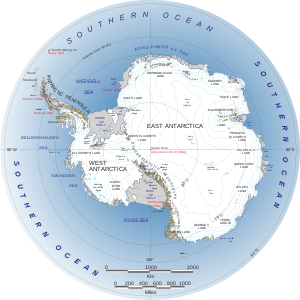
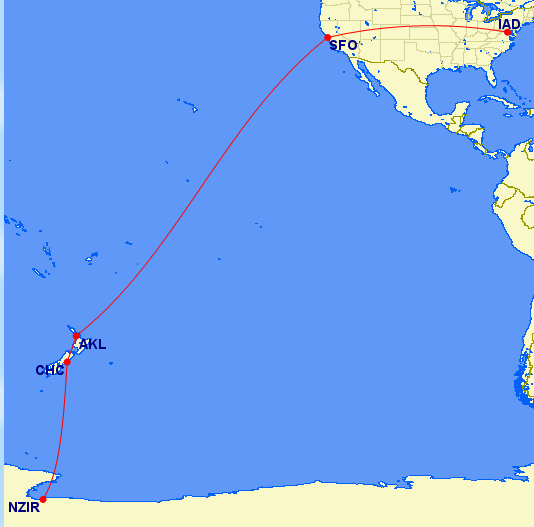

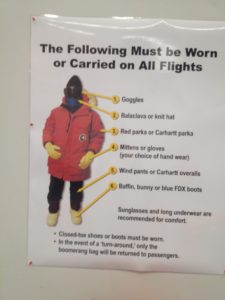
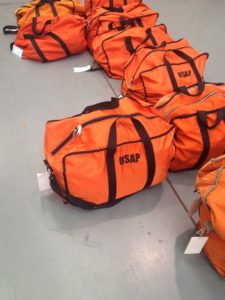
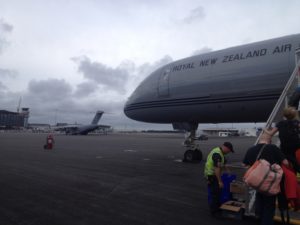
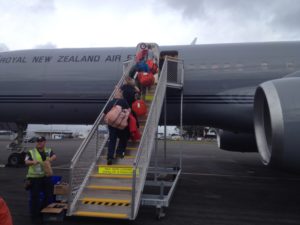
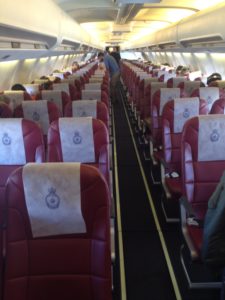
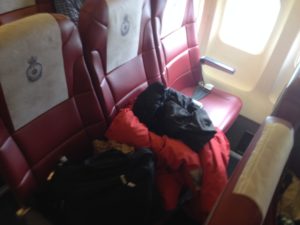
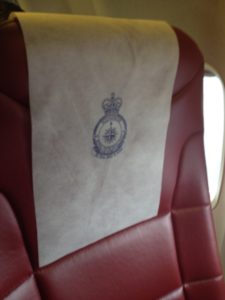

What was the exact cost of the flight per person/round trip specially the one from CHC to Antarctica?
@Noa – I think the commercial flights were about $1800 RT, but the flights to and from Antarctica are military and no cost. This was for work, not tourism.
Please do not use homophobic slurs like “sissy.” Weak would have been sufficient.
@JM – We come from different worlds. Sissy just means someone who is not tough, never heard is associated with homosexual.
Having spent 3 seasons on the ice with the navy. I understand your journey how long did you stay and how can I get a gig where I just go a short time without a nsf contract. Backpacked the South Island a couple times. Gods country
Wow, did you get the “Wintered Over” bar on your Antarctica Medal? Always thought that is the toughest medal to earn in the military. The guys with the best tours are the air crews who only come in and stay a day or two before heading back. At least the NSF tours are only 3-4 months for most folk. Only a small crew winter over.
no winter over bar, but i do have the medal. 15 months total..best tour i ever had
The guys with the best tours are the air crews who only come in and stay a day or two before heading back.